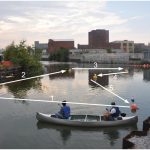 I’ve written previously about some fascinating applications of new technology to help people with their rehabilitation. Another good example of how the field is being innovated comes via a recent paper that highlights the use of citizen science to support people with their repetitive rehabilitative exercises.
I’ve written previously about some fascinating applications of new technology to help people with their rehabilitation. Another good example of how the field is being innovated comes via a recent paper that highlights the use of citizen science to support people with their repetitive rehabilitative exercises.
The approach, which was devised by a team at the NYU Tandon School of Engineering, allows those who are participating in rehab to also contribute to scientific projects that require such huge datasets.
Gaming science
The examples referred to at the start of this post used gamified VR environments to encourage greater participation in the rehab exercises. This latest study however deploys similar techniques but the output is scientific contributions to mapping water pollution.
The game sees participants controlling a miniature boat loaded with instruments via their physical gestures. The game is designed to be playable without requiring expensive equipment, and instead utilizes low-cost motion capture devices.
The researchers devised the project after observing that the motions required of people performing rehab could be aptly converted into the control of a craft performing science if the interface was just right. When the game was tested, not only was it effective at doing the science, but it also encouraged the user to stick at their rehab for longer, thus leading to better motion performance.
The system consisted of a Microsoft Kinect sensor to monitor their movements, with the game-like device used to ‘pilot’ a boat, control its thrust and steering via various movements of the arm and wrist.
Affordable engagement
The promising early results suggest that it’s possible to roll-out an inexpensive, off-the-shelf system that can keep people engaged in their rehabilitation for longer, whilst also performing some crucial scientific work.
“The study constitutes a first and necessary step toward rehabilitative treatments of the upper limb through citizen science and low-cost markerless optical systems,” the researchers explain. “Our methodology expands behavioral rehabilitation by providing an engaging and fun natural user interface, a tangible scientific contribution, and an attractive low-cost markerless technology for human motion capture.”